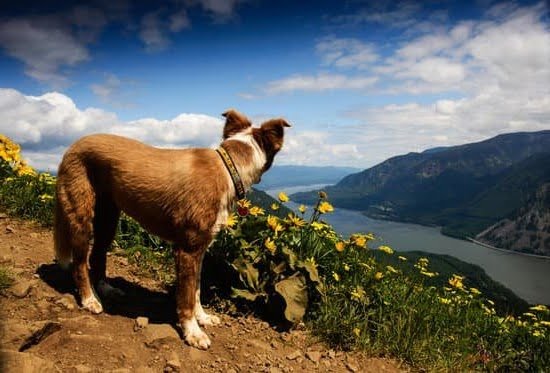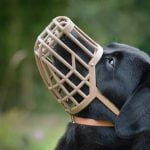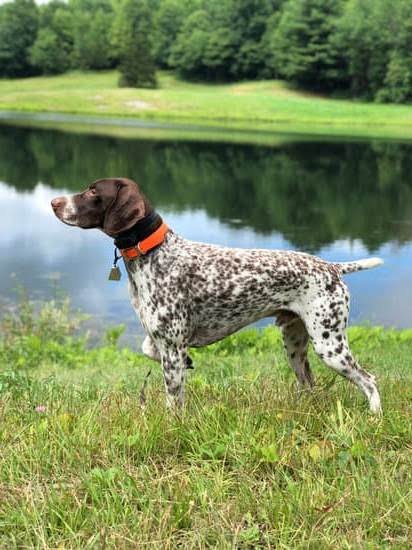Introduction
Barn Hunt is an exciting canine sport that originated in the United States and is growing in popularity. The goal of Barn Hunt is to find a designated amount of rats placed in enclosures called tubes within a large hay bale maze. Any breed can compete, including mixed breeds and more, regardless of size.
Training your dog for this activity offers many desirable benefits. Firstly, it enhances the bond between you and your pup by creating an enjoyable, rewarding environment between both parties. In addition, it helps build confidence and mental stimulation for your pup as they train their nose and problem-solving skills – which often lead to improved obedience skills overall. Finally, Barn Hunt serves as an activity that allows you to spend quality time with your pooch outdoors; taking regular trips outside not only helps provide relief from cabin fever but also may equip them with valuable life-saving skills.
Apart from the overall benefits of Barn Hunt activities, specific training steps can help you get your pup ready to begin competition levels:
1. Introduce your dog to tubes containing rat scent and praise them when they show interest or alert behavior around the tubes.
2. Slowly increase distractions while keeping eyes on the tube while providing reward treat. This reinforces tube as valued item/assignment focused on by dog rather than distraction (e.g someone coming into room)
3. Create structure and explain rules around task so puppy can understand what success looks like (e are acting correctly)
4.. Teach commands such as sit stay come etc so coach can control dog’s behavior more effectively at trial
5… Work on search pattern understanding ability so coach + pup can work together efficiently obstacle courses
Preparing for Barn Hunt Training
Equipment and Gear Needed for Barn Hunt Training:
• A barn hunt box or “rat burrow” with an integrated fan system- This setup provides a safe, contained space for training your dog to properly locate the rat(s) before searching other areas of the barn.
• Rat scent – The scent is the most important element in this sport as it is what allows your pup to find their quarry. Be sure that you use a scent that is specific to rats and not another type of small mammal or animal.
• Clicker or whistle – These tools can be used to mark when your dog has found a rat. They also give them an audible cue as to what they should do when they locate one.
• Leash and collar – You will need to use a leash and collar when training your pup on how to conduct themselves around the rat burrow so that they can learn basic commands like “sit”, “stay”, etc.
• Treats – Rewarding your dog with treats after they perform well during their training sessions will help keep them motivated and interested in learning the skills necessary for success in barn hunt competition.
Physical and Cognitive Skills Training: It is important that your pup have good physical stamina as well as mental awareness when competing in barn hunt trials. You will need to develop exercises geared toward teaching them physical agility like running, jumping and climbing obstacles as well as teaching them mental tasks like problem solving, rhythm and timing recognition, object identification, concentration and recall. In addition, you will want to familiarize them with the look, sound and smell of rats so that they can recognize it more quickly in a trial run situation. Lastly, proper socialization prior to taking part in barn hunt competitions is highly advised as this helps ensure a positive experience for both humans and pups involved!
Setting Up the Training Environment
Before beginning the training, it is essential to ensure that you have found a safe and suitable location for training. An area such as a barn or abandoned building can be ideal for this purpose. When selecting an optimal environment, consider factors such as size and layout. Also, make sure there are no hazards or obstructions which may injure your dog during the training process.
Once you’ve chosen the right area, it’s time to build the crawl space. This can be done using hay bales or stackable cubes so that your dog has plenty of locations to explore and search through while they hunt. Additionally, you should use scents of different animals so that your pup has something interesting to find during the process. Make sure to place enough of them around so that your pup won’t get bored quickly from searching in one area alone. You might also want to add some small treats in various spots around the area – this will help encourage your pup as well as serve as rewards for success!
Basic Obedience Skills and Encouraging Thinking
Before beginning to train your dog for barn hunt, it is important that your dog has the basic obedience skills, such as sit and stay, down, and come. Give your dog verbal cues, along with treats and praise when they respond correctly. As your dog becomes more responsive to commands and shows a willingness to learn, you can begin teaching them problem-solving techniques. Introducing agility apparatuses like tunnels or jumps is a great way to encourage thinking as part of their training regimen. You should also try hiding treats around the house and instructing them to “find” it. This will help them become skilled at finding objects and develop problem-solving skills that can be used in barn hunt building on their natural instinct and desire to hunt prey. Additionally, you should teach them the concept of “search and remain”, which is where the dog remains close by while using their nose to investigate an area in order to locate the rat they are expected to find while participating in barn hunt competitions.
Introducing the Sport
Barn hunt is a fast-growing sport where dogs run through straw-filled tunnels and use their noses to locate rats. Though the sport looks like a fun game for the dog, it has competitive elements as well. To get into the sport requires an understanding of the concepts and rules of barn hunting, safety protocol, and general training for your dog.
Introducing Barn Hunt: Before you begin training your dog for barn hunt, familiarizing yourself with the concepts and rules is helpful. Barn hunt involves dogs scurrying through crawl tunnels on straw bales while searching for rats hidden in PVC tubes or small burrows called “rat tubes”; these rat tubes can be placed alongside regular tunneling bales or spread across an open field. The goal of the game is for each team (dog + handler) to find all of the rats as quickly as possible without disturbing any other animals that may be in their path such as mice, lizards or snakes – this means that often handlers must give their dogs specific commands regarding what type of animal must not be disturbed! Rules include: no baiting allowed, dogs must stay on leash with handler at all times, movements that appear aggressive towards rat/rodent are not allowed.
Safety Protocols: Barn hunting can be dangerous if proper safety protocols aren’t followed. It is important to learn about hygiene before entering a new space – avoid licking or eating anything found in crawl spaces as many could contain parasites or toxins potentially harmful to humans and animals alike! Additionally, check barns regularly for any damage due care – there should never be sharp objects within reach during a hunt; additionally, noise levels should remain moderate to ensure no one becomes startled by loud barking or noises.
Training Your Dog: Now that you have learned more about rules and regulations surrounding barn hunt let’s talk about training your dog specifically for this activity. A basic understanding of smell games and foundation search will benefit competing teams however there are several key aspects unique to barn hunt specifically which need practice: including finding target within multiple stimuli around them & being able to discriminate between live rodents using signal from handler ( vs finding toys). Training should involve exposing your pup to props associated with rat environment such as entry hole boards (that teach them how push holes), simulating startle response from plastic-rats/gestures + verbal cueing for desired behavior when locating rodents etc… Basic agility skills such as jumping/balancing on irregular surfaces also help build necessary coordination skills needed in this type of competition. With enough practice your pup can become a master rat catcher in no time!
Building Up Confidence
If you want your dog to be happy and to thrive in their barn hunt training sessions, it is important for them to be comfortable and confident. Start off during the training sessions by offering positive reinforcement, such as treats and small rewards when your pup succeeds. Doing so will help create a positive mental association with the challenge of barn hunting, which will help them remain calm and relaxed even in challenging situations. Additionally, it can sometimes be beneficial to give your dog a break after completing puzzles or tasks to allow them some time to relax. During these moments you can use calming techniques like petting or massage therapy to comfort them. You may also want to bring along familiar items from home, like toys or blankets that smell like you or your family; this can provide a connection and sense of security for your pup. Finally, don’t forget to shower your pup with praise when they complete each task; being enthusiastic and encouraging shows them that despite any difficulties they may have encountered they successfully accomplished the puzzle.
Understanding the Target
Barn Hunt is an exhilarating sport for both dogs and their owners. To get started, it is essential to teach your dog how to locate and responded to a specific target. This target will be located inside a construction tube made out of straw or hay.
Before beginning the training, there are some important steps you should take. First, you will need to introduce your dog to the construction tube so they become familiar with it. Place the tube upright on the ground and encourage your dog to explore it. It can help to leave treats or toys inside the tube to reward them when they interact with it.
When your dog seems comfortable interacting with the construction tube, you will then have to introduce them to the target scent – typically a rat hidden up in the structure or some kind of scent article placed in or around the tube. You can use positive reinforcement such as treats or verbal praise when your dog approaches or interacts with the target scent.
With enough practice, your dog should eventually learn that when they identify and approach the target scent determined by you (the handler), they will be rewarded accordingly. It is also important that your dog understands that false alerts are not rewarded; instead, ignore false alerts until until correct behavior is displayed before rewarding them positively. With time and patience, your pup should come to recognize and respond appropriately when locating targets in barn hunt competitions!
Achieving Success
Training your dog for barn hunt is a great way to bond and have a good time. It can take some dedication and patience but the result can be very rewarding. To help your pup succeed, you must understand the basics of how the sport works, know how to set up an obstacle course, and understand how to apply positive reinforcement when needed.
When beginning your training regime, always be sure that you are working in a safe environment free from other distractions. Make sure your dog understands what you are asking of him by taking it slow and introducing new commands one at a time. If he is having difficulty understanding or following commands, remember not to get frustrated with him. Use treats as rewards for successful obedience as well as verbal praise.
If after several sessions your dog does not appear to make any progress, don’t despair! Every dog will learn at his own pace so continue training and using positive reinforcement such as treats, verbal praise, and physical affection whenever possible. When you do hit roadblocks during training, just take a step back and look at why the issue is occurring. Perhaps your pup is distracted or overwhelmed with too many commands at once; returning back a few steps may fix this issue entirely! Keep track of our successes along with where you are running into issues and continue progressing slowly but surely over time towards success in barn hunt training.
Troubleshooting
Barn hunt is an exciting activity that provides both mental and physical exercise for dogs. Training your dog to excel in barn hunt is both rewarding and challenging. While it may take some persistence, it can be done with patience, practice and positive reinforcement methods. Here are some tips to help you troubleshoot potential roadblocks as you work on training your dog:
1. Refusal To Enter Tube: If your dog refuses to enter the tube, start small and get them used to the new experience by replacing the large tube with a plastic bowl or cardboard box at first. Have them hop inside the smaller object by offering treats and praise when they do so successfully. Increase the size of the object gradually until they are comfortable entering into a full-size tube.
2. Fear Of Noise: Barn hunts involve loud noises such as clapping and barking, which can be intimidating for dogs who have not been exposed to these sounds before. To reduce fear, begin by introducing the noise on low volumes gradually increasing the volume over time – making sure that each step is successful before moving onto the next level of intensity. If at any point your dog becomes uncomfortable, go back to a volume where he or she will succeed enthusiastically before proceeding forward again with caution.
3. Unwillingness To Perform Tasks: As with other training exercises, some dogs lack motivation or interest in tasks required for barn hunt success – such as climbing through tunnels or jumping through hoops – which requires more patience from their trainer than simple obedience commands do. Break down each task into smaller steps, introduce treats regularly and provide rewarding praise when successes occur; this mix of positive reinforcement and familiarity should ignite your pup’s enthusiasm for learning new skills!
Conclusion
Training a dog for barn hunt provides a great way to bond with your pup and is an exciting activity that both you and your dog can enjoy. It combines problem-solving skills and a love of exploring with the excitement of searching for hidden quarry, like rodents or rabbits. Training your dog to take part in Barn Hunt also offers benefits such as:
• Exercise – As your dog searches through the hay bale maze, they will be getting plenty of exercise which can bring many health benefits. Regular physical activity helps keep dogs more mentally alert and increases their overall wellbeing.
• Building trust – By training your dog together, you are creating a trusting relationship between the two of you by teaching them tasks that require focus and understanding. This deepens the bond between you and encourages loyalty between one another.
• Enhancing senses – Barn Hunting allows dogs to use their sense of smell, sight, hearing and touch to explore their environment and uncover hidden objects. This helps keep them intellectually active while encouraging natural behaviours.
Finally, training your dog for Barn Hunt can be great fun for both you and your pup! The process involves spending time together building a strong bond which strengthens the trust between pet and owner. Not only does this mental stimulation come with plenty of physical activity benefits but is also an excellent opportunity to let them use their full range of senses!

Welcome to the blog! I am a professional dog trainer and have been working with dogs for many years. In this blog, I will be discussing various topics related to dog training, including tips, tricks, and advice. I hope you find this information helpful and informative. Thanks for reading!





